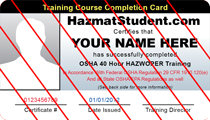| Risking Life and Limb | Workplace Amputation Hazards |
Every year, thousands of U.S. workers lose fingers, hands, feet, and other body parts as a result of workplace accidents. Between 2015 – 2016, there were an average of seven amputations per day reported to OSHA. This average only includes data from 26 states and doesn’t account for unreported injuries, so the actual numbers are likely much higher. These accidents are often preventable.
Amputations are seen across many industries, such as manufacturing, construction, warehousing, and more. Workers involved with any mechanical motion are potentially at risk for an amputation injury.

The most common hazardous mechanical motions that result in amputations are: Rotating; Reciprocating; Transversing; Cutting; Punching; Shearing; and Bending. When body parts are crushed, compressed, caught between, or struck by objects, amputation injuries can occur.
Workplace amputations most often occur when equipment is unguarded or inadequately safeguarded. These injuries also frequently involve the use of forklifts, doors, trash compactors, powered and non-powered hand tools, and materials handling activities.
OSHA offers the following tips to help workers avoid amputations:
- Use guards as physical barriers from hazardous areas.
- Don’t bypass, remove, or tamper with machine guards.
- Use devices to help prevent contact with machinery points of operation.
- Devices can interrupt the normal cycle of the machine when the operator’s hands are at the point of operation.
- Use proper lock-out/tag-out procedures on all equipment.
- Ensure employees are trained in the safe use of equipment.
- Modify work practices as needed for safety.
Take the time to recognize, identify, manage and control amputation hazards in your workplace. With heightened awareness and a few preventative measures, most amputations can be avoided. For additional information on workplace amputations, please see OSHA’s Fact Sheet: Amputations.



